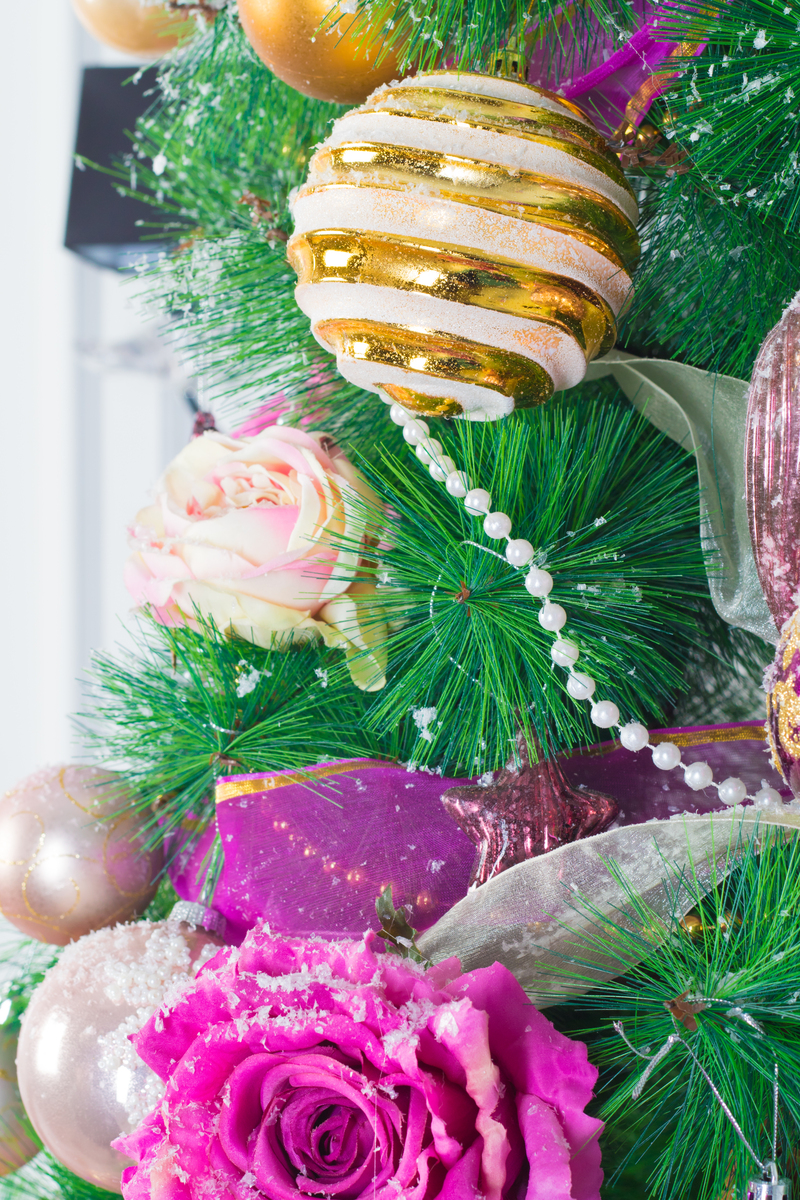Keep Your Cut Flowers Alive and Vibrant Longer
Posted on 30/08/2025
Keep Your Cut Flowers Alive and Vibrant Longer: Expert Tips and Tricks
Receiving a bouquet of fresh flowers can brighten anyone's day, but all too often, those beautiful blooms start to droop and wilt sooner than we'd like. The good news? With a little know-how and care, you can keep your cut flowers alive and vibrant much longer, allowing you to enjoy their beauty and fragrance for days--sometimes even weeks. This comprehensive guide will walk you through everything you need to know to prolong the life of your floral arrangements.
Why Do Cut Flowers Fade So Quickly?
Understanding why cut flowers deteriorate is the first step to keeping them vibrant. Once a flower is separated from its plant, it's cut off from its main water and nutrient supply. The natural process of wilting begins as stems close up or get blocked, bacteria multiply in the water, and vital moisture evaporates from the leaves and petals. Each of these factors can shorten the lifespan of your bouquet if not managed properly.

How to Make Your Flowers Last Longer: Preparation Steps
The secret to long-lasting cut flowers lies in proper preparation and attentive care. Below, you'll find the essential steps to help your arrangements look lively for as long as possible.
Start With Fresh, High-Quality Flowers
- Buy from reputable florists or markets: The fresher the flower, the longer it'll last. Avoid buying blooms that already look limp or discolored.
- Check for buds: Flowers that are just beginning to open will last longer than fully bloomed ones.
- Inspect for damage: Steer clear of flowers with brown spots, wilted petals, or drooping stems.
Snip and Prepare the Stems Properly
- Cut stems at an angle: Use sharp scissors or pruning shears to cut about one inch off each stem at a 45-degree angle. This increases water absorption.
- Trim underwater: If possible, trim stems while they're submerged in water to avoid air bubbles, which can block water uptake.
- Repeat every few days: Re-trim stems as above to keep water pathways clear.
Remove Leaves Below the Water Line
- Prevent bacterial growth: Any foliage below the water's surface will rot, causing bacteria to multiply and shortening your flowers' lifespan.
- Strip excess leaves: Use your fingers or a clean tool to gently remove these leaves before arranging flowers in their vase.
The Perfect Home for Your Cut Flowers: Choosing and Cleaning the Vase
One of the most overlooked aspects of keeping cut flowers fresh for longer is ensuring a sanitary and suitable environment.
Select the Right Vase
- Size matters: Choose a vase that adequately supports your arrangement without crowding stems, which could impede water flow.
Cleanliness is Key
- Wash with warm, soapy water: Before placing new flowers, thoroughly wash your vase to remove bacteria and old residue.
- Rinse well: Any lingering soap can harm sensitive flower stems.
Fill The Vase with Fresh, Room-Temperature Water
Fresh, clean water is critical to keep your flowers alive and vibrant longer.
- Room-temperature water: Most cut flowers prefer water that's neither too cold nor too hot. Florists recommend lukewarm water for most varieties.
- Refill regularly: Top up and change the water at least every two days.
- Deep enough water: Make sure stems are adequately submerged, but don't let excessive leaves or petals sit below the line.
Feed Your Flowers: Flower Preservatives and DIY Solutions
Commercial floral preservatives do more than nourish--they inhibit bacterial growth too. But if you don't have a packet handy, don't worry! There are effective homemade solutions that can help you keep your flowers fresher, longer.
What's In Flower Food?
Typical store-bought packets contain:
- Sugar: Provides energy the cut flowers can no longer produce themselves.
- Citric acid: Maintains the right pH, making water more easily absorbed and discouraging bacteria.
- Bleach or a disinfectant: Keeps bacteria and fungi at bay.
DIY Flower Food Recipes
- Lemon-lime soda: Add one part of clear soda (not diet or cola) to three parts water, plus a few drops of bleach.
- Homemade mix: Combine 2 tablespoons lemon juice, 1 tablespoon sugar, and 1/2 teaspoon bleach per quart of water.
- Penny or aspirin: Some swear that dropping a copper penny or a crushed aspirin tablet in the vase offers antibacterial effects.
Always test new floral food with a single flower to make sure it doesn't damage delicate stems!
Placement: Where to Keep Your Flowers
Where you display your flowers can significantly affect how long they stay fresh and colorful.
Best Locations to Keep Cut Flowers Alive Longer
- Cool and shaded: Direct sunlight and heat speed up wilting, so choose a spot that's cool and away from windows or appliances.
- Away from drafts: Blowing air accelerates moisture loss, so avoid vents, fans, or open windows.
What to Avoid
- Ripening fruit: Fruits give off ethylene gas, which causes flowers to age faster. Keep your bouquet away from fruit bowls!
- Smoke and exhaust: Fumes and smoke are harsh on delicate petals and can hasten their decline.
Ongoing Care: Daily Steps to Keep Flowers Vibrant
Change the Water Regularly
- Every two days (at minimum), empty the vase and replace with fresh, room-temperature water.
- Rinse the vase with a little bleach or vinegar to kill lingering bacteria each time you change water.
Re-Cut the Stems
- Trim 1/2 inch: Every few days, use sharp, clean scissors or a knife for a fresh, angled cut so stems can absorb more water.
Remove Wilting Flowers
- Deadhead promptly: Remove any dying or faded blooms to prevent ethylene gas from affecting the healthy flowers.
Mist for Extra Hydration
- Light misting: Using a spray bottle, gently mist the petals and leaves regularly (but avoid drenching) to help keep them hydrated, especially in dry environments.
Special Tips for Different Flower Types
Not all blooms require the same care. To achieve the longest-lasting flowers, pay attention to the unique needs of each variety.
- Roses: Remove the outer "guard petals" and place in deep water after a fresh cut. Watch for wilting along the stem--a sign of an air bubble blockage (re-cut again if needed).
- Lilies: Carefully remove stamens to prevent pollen stains and prolong flower life.
- Tulips: Prefer cool water and will continue to "grow" in the vase; re-trim and support as necessary.
- Sunflowers: Require a lot of water initially; keep the vase full and change water daily.
- Daffodils: Secrete a sap that can kill other blooms--let them stand alone for several hours in water before combining with other flowers.
Common Myths About Keeping Cut Flowers Fresh
Many household tricks circulate when it comes to keeping bouquets lively, but not all are grounded in science.
- Sugar only: While sugar feeds the blooms, without acidity or disinfectant, bacteria may flourish.
- Aspirin: Some experts say it works by acidifying water, but it's not universally effective for all flowers.
- Vinegar: When used alone, could harm certain sensitive varieties.
Test carefully and stick to proven methods unless you're prepared to experiment with single stems.

Summary: Keep Your Cut Flowers Fresh and Alive Longer
With these tips, anyone can enjoy vibrant, beautiful bouquets for days longer. To recap:
- Start with the freshest flowers possible
- Trim stems properly and regularly
- Use clean vases and fresh, room-temperature water
- Add fertilizer or DIY flower food as needed
- Display away from heat, sunlight, and fruit
- Change water, mist petals, and prune fading blooms daily
By combining all these strategies, you'll keep your cut flowers alive and vibrant much longer, turning any bouquet into a long-lasting centerpiece that continues to bring joy and beauty to your home.
Frequently Asked Questions: Prolonging Your Flowers' Lifespan
How long should cut flowers last?
The average vase life for cut flowers is 5-14 days, depending on the type and quality of care.
Is flower food necessary?
While not essential, proper preservatives definitely help your flowers stay fresher for longer by reducing bacteria and providing nutrients.
Can I revive wilted flowers?
If wilting is due to an air bubble, give stems a fresh cut under water and place them in hot water for a minute, then move to their vase. If it's bacterial, change the water and prune the stems.
With the care and techniques outlined above, anyone can expertly keep cut flowers vibrant and alive for as long as possible--ensuring maximum enjoyment from every arrangement!
Latest Posts
Expert Tips for Perfect Orchid Care
Enchanting Blooms for a Special Birthday
Keep Your Cut Flowers Alive and Vibrant Longer
Reveal 3 simple suggestions to prolong the life of your beautiful flowers






